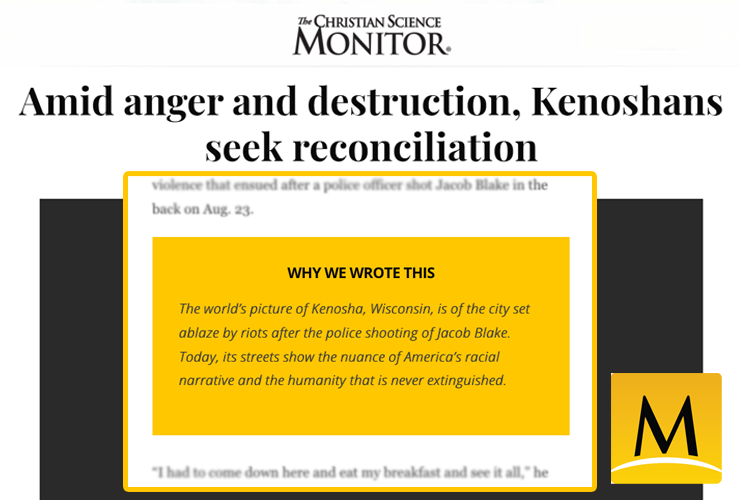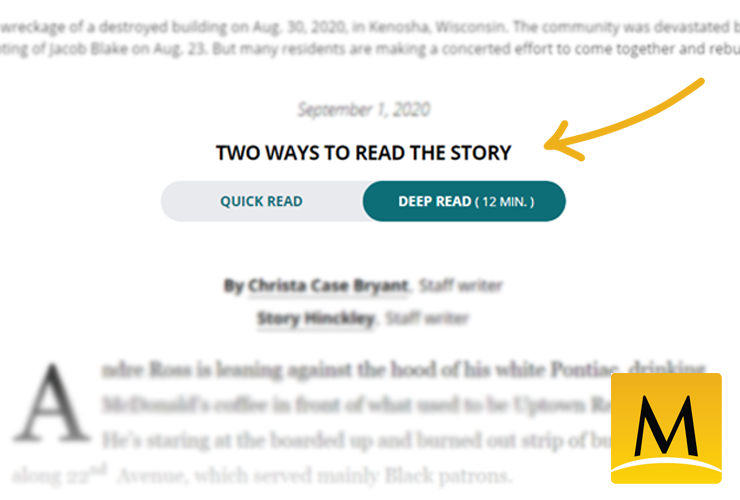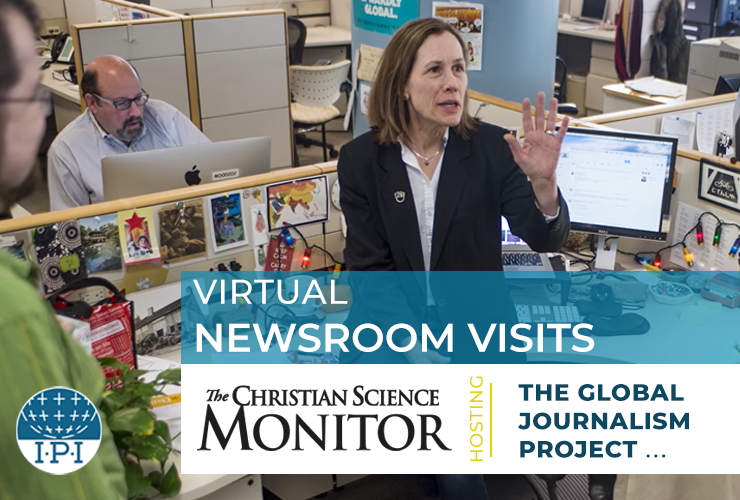The Monitor has always been different: the oldest U.S.-based international non-profit news organization, early to “digital first”, deep into an audience-centred focus.
Its journalism is based on one big question: How can journalism help fuel human progress? It’s a profoundly hopeful perspective that The Monitor has been bringing to its audiences for more than 113 years.
“Something we’ve really tried to do in the past several years is make sure readers understand what our mission is”, Managing Editor Amelia Newcomb told the group of editors and newsroom leaders from 11 countries who joined the virtual visit to the Monitor on April 7.
“One thing the Monitor does try to do is follow up on stories that have fallen out of the news. We are stubbornly trying to go in the other direction because of that feeling that the world is actually complex. Trying to help people see that complex world is really what we try to do.”
Now they are focused on how to make this journalism (guided by hope, ideas, humanity, perspective) urgent and relevant to a growing readership: “We are a really good laboratory for trying to figure that out and that is an ongoing thing, we haven’t figured out the formula yet but we are still here and we are still looking forward and we are finding things” editor Mark Sappenfield explained.
“We’re really trying to focus our journalism on those qualities because we think that’s where we can both fulfill our mission and hopefully present a really compelling narrative to readers.”
The result right now is thoughtful, global coverage daily online and weekly in a print magazine, a formula they have tested at each change with their readers.
Clayton Collins, director of editorial innovation, explained how The Monitor developed new digital products using design sprints and a lot of user testing. In 2017 they set out to redesign their daily offering with no preconceptions of what the product would look like, only that it would be digital.
“Why we wrote this” is a feature now included in Monitor stories. “The idea really is to stop someone as they’re reading the story and say you may think you know what the story is, you may have heard it, but we’re bringing something really different to it.”

We found in a design sprint more recently that moving the ‘why we wrote this’ box down a few paragraphs and backing it with a hotter color, it actually got people to stop and consider what they were reading.
Along the way they spun off a number of products including The Redirect, which presents a counter narrative video to misinformation. “We thought, what does the Monitor do? One of the things that we do is intercept erroneous narratives in the news and add some course correction or some perspective.”
They also developed a toggle where readers can choose a mini read, which is about 220 words, or the full read. “We’re trying to do more thinking when we start talking about stories and to ask what’s the best way to tell this story. It isn’t always a 12 to 1500 words written piece.”

Dave Scott, audience engagement editor, talked about their experiments with audience engagement including Zoom event formats with a 30-minute interview between Mark and the guest followed by 30 minutes of Q&A with the audience. “The purpose of this is just to build a relationship with subscribers, to engage with them, to let them get to know us and how we approach things and how we approach the news.”
Journalists, editors and media innovators from 11 countries joined our first newsroom visit, including from Kenya, Turkey, Zimbabwe, Austria, South Africa, Serbia, Netherlands, India, Nigeria, the U.S., and Azerbaijan.
Missed the event?
Watch the recording here and check our Peer to Peer programme and upcoming visits we planned for April and May.
MISSED THE EVENT? SEE OTHER NEWSROOM VISITS THIS APRIL 2021
About Peer to Peer
IPI virtual visits over zoom are an opportunity for newsroom wisdom to flow between countries and continents, and for niche digital expertise, on everything from business models, product and audience, to new journalism formats and engaging new audiences to be shared so we are all able to do the best journalism we can for our communities.
You are invited to register now to take a seat at the table for our forthcoming intimate discussions throughout April:
* Aftenposten, Norway on April 16
* Neue Zürcher Zeitung, Switzerland on April 27
* Público, Spain on May 11
Who should join? Editors, publishers and journalists, and those with roles in innovation, product, audience and leadership.
The IPI Peer to Peer virtual newsroom visits is part of the Global Journalism Project to strengthen the IPI global network and secure the future for independent journalism.
This is the first in a series of visits with special programs for local media and Asia/Africa exchange to come.
